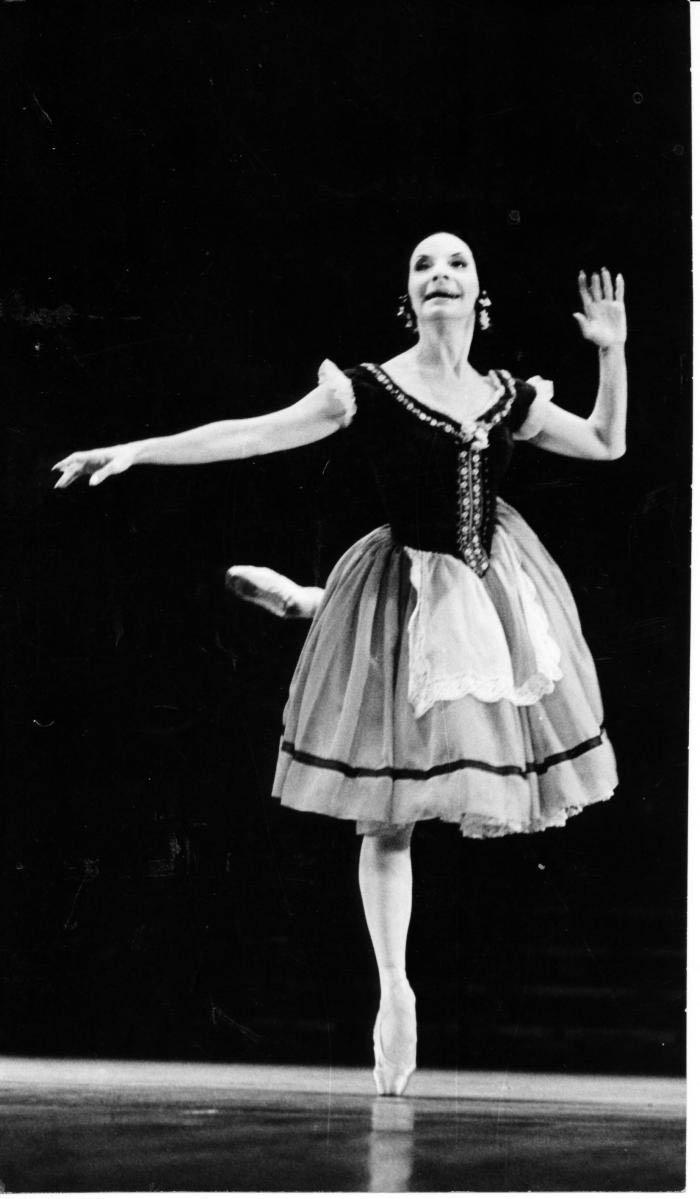
It is not true that Alicia Alonso has stopped dancing. One year since October 17, 2019, when we bid her farewell with applause and admiration as legends deserve, she dances here, there, and everywhere, providing an active presence in performances, exhibitions, concerts, publications, schools, rehearsals and, above all, in the living memory of her people.
Over the year that has passed since then, a special motivation existed. We were reaching the centenary of her birth in Havana, on December 21, 1920. Thus, in the first days of 2020, the work of this extraordinary dancer and choreographer was placed high on the commemorative agenda inside and beyond the island.
The National Dance Company of Mexico prepared a season of Giselle, in Alicia’s version, which was performed in that country for a brief, intense period, with the Cuban National Ballet (BNC) represented by first dancers Anette Delgado and Rafael Quenedit.
The world was entering a planetary battle against the new coronavirus and the cancellations were not long in coming. In Spain, gala performances had been organized in several cities. The most important celebration, the Havana International Ballet Festival, bearing Alicia’s name, was postponed to 2022. Nonetheless, as confirmed by current BNC general director, Viengsay Valdés, beginning on her birthday the institution will present the best possible program to honor the eternal prima ballerina assoluta “at the level she deserves and we desire."
In spite of the circumstances, wherever possible, Alicia has appeared. Around the world, she figured prominently in celebrations of International Day of Dance, held annually April 29. On this occasion the International Theatre Institute (ITI), affiliated with UNESCO, proclaimed the event’s dedication to Alicia Alonso and disseminated a lengthy digital dossier providing data on her career as a dancer and choreographer, in addition to presenting a photo gallery of her most famous performances. The Spanish delegation of the ITI, the Alicia Alonso Dance Foundation of Madrid and the National Museum of Dance of Cuba contributed to the dossier.
The Island Council of Mallorca presented a photographic exhibition commemorating not only her centenary, but also the 30th anniversary of her performance there. With photographs by Oscar Pipkin, installed at the Palacio de la Misericordia, the exhibit featured unpublished images of Alonso's performance with Russian dancer Rudolf Nureyev in 1990, during the First International Festival of Music and Dance in Palma de Mallorca. It was a beautiful way to relive an event, in which, accompanied by the soprano Victoria de los Ángeles, the two stellar figures joined their talent to perform Poem of Love and the Sea, with choreography by Alberto Méndez, music by France’s Ernest Chausson and design by Salvador Fernández. At the opening, the documentary Three Myths for One Night, a production of the National Museum of Dance of Cuba, by Ioshinobu Navarro Sanler, was screened.
The XII International Ballet Festival of Cali, Colombia, at the end of the summer, was dedicated to the memory of Alicia. Conducted online, ballet-lovers in that country and those who followed the event on social media enjoyed a gala performance by the BNC, specially designed to show appreciation for this gesture made by the people of Cali.
The connection of new generations of Cuban dancers, and those in other countries, with the teaching of the prima ballerina assoluta was emphasized by Pedro Simón, director of the National Museum of Dance: "That young people dance in honor of Alicia Alonso is the purest and most just action that can be conceived to honor the centennial of a figure who exalted, like few others, the art of classical ballet, and dance as a whole, with her personal interpretative genius and the teachings that she bequeathed to generations of dancers of her time and the future. Alicia Alonso did not limit herself to receiving the legacy of the great masters who passed on the traditions of previous centuries, rather she found ways to recreate them, enrich them and take them along new paths, without betraying their essence, but making them an experience in keeping with and close to modern times, to the audiences and artists of our days."
Cuban Culture Day, October 20, placed Alicia at the center of its tributes, along with Omara Portuondo, Alfredo Sosabravo and Juan Padrón, multiplying her signs of life, here as well. With the resumption of theater programming, the Gonzalo Roig National Lyric Theater is looking to highlight the support and commitment of Alicia to opera and zarzuela in our country.
In the Plaza de la Libertad in Matanzas, the exhibition Matria, from Gabriel Dávalos, a photographer who has made a career by focusing on dance, with a renovating spirit, has just recently been installed. This retrospective of his work, sponsored by the Cuban Fund for Cultural Heritage, pays tribute to the legendary dancer. Equally attractive commemorations included the online presentation of the book De la semilla al fruto (From the seed to the fruit) by José Luis Estrada, from the Abril publishing house; the digital exhibition Lo hispánico en el arte de Alicia Alonso; and the premiere of the audiovisual entitled Era, with music by Daniel Martín, arranged by Maestro Frank Fernández, who performed the piece with Ecuadorian violinist Jorge Saade, which generated high expectations as an approach to Alicia's connection with the youngest generations.
Alicia has not stopped dancing, although as the notable intellectual Juan Marinello said in his day, she "does not need, or want, a royal crown, because she wears on her forehead a different and higher light: that of an exemplary worker of a Revolution faithful to its time, which assures everyone bread, justice and song."






